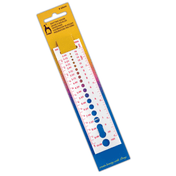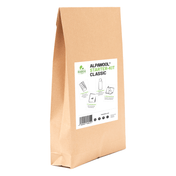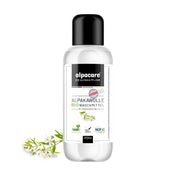The most important thing you should know about knitting needles
As you can probably imagine, there is a very large range of needles for knitting. They differ in shape, color and material, among other things, and are suitable for a variety of applications. To give the topic a little structure, we will start by mentioning the 3 main types of knitting needles.
What types of knitting needles are there?
Straight knitting needles, also called simple knitting needles
The name suggests it. They are straight and have a so-called stopper or button at one end so that the knitted piece does not slip off the needle. The classic needle type, with which you can knit almost anything.
Double pointed needles or double pointed needles
Double pointed needles consist of 4 to 5 knitting needles that are slightly shorter than the straight/single knitting needles. They are pointed at both ends. This means that they can be formed into a circle to make stockings or other tube-like items such as sleeves.
Circular knitting needles
Circular knitting needles are connected to each other with a flexible cable and have short tips. They can be used to knit not just one but several stitches in parallel or seamlessly. This is also called circular knitting and allows a piece of clothing to be made without a seam. Circular knitting is very popular because it is gentle on the joints and tendons. The relief is achieved because the mass does not rest on the needle but is distributed over the cable.
There are fixed and interchangeable circular knitting needles where the needle tips and cables can be exchanged, which brings a great deal of flexibility in terms of knitting variety.
What does needle size mean and what sizes are there?
The diameter of the knitting needle indicates the needle thickness. Thin needles are suitable for small stitches, thick needles for large ones. There are needle thicknesses from 1.25 to 20 millimeters. You can tell how thick a needle is by looking at the respective print. If you can't find any print, a so-called needle gauge can help. Incidentally, the wool's banderol indicates which needle thickness you can use. Usually 2, sometimes 3 sizes are possible. For example, with Baby Alpaca Wool BULKY Pearl Pink Heather you can use sizes 5 and 5.5 as well as 6 mm. You can also find this information on the respective article page under the item Product Information.
Beginners are best off knitting with thicker needles because they are easier to grip. The thicker wool is usually easier to work with and you get the result faster.
Which material is right for knitting needles?
Metal knitting needles
Aluminum, stainless steel or brass are usually used, sometimes with a nickel coating (attention for allergy sufferers!). Metal needles are particularly hard and robust and also particularly sharp. You can knit quickly with them. The smooth surface makes them particularly popular with tight knitters and they are also suitable for fine and fibrous yarns.
Plastic knitting needles
They are lightweight, inexpensive and available in a wide variety of shapes and colors. They also have a relatively smooth surface, are warm to the touch, and are stable and flexible.
Wooden knitting needles
They are made from different types of wood. For example, birch wood, olive wood, ebony, violet wood, rosewood, chestnut wood, etc. Wooden needles are sometimes made by machine or by hand and are available in very different qualities. Many people particularly like the warm feel. They are usually a little more expensive to buy.
Bamboo knitting needles
Bamboo is very light, warm, slippery but easy to grip and flexible and is not wood but a grass. The needles can break if the needle thickness is too small. They are suitable for smooth fibers (eg mohair wool, merino wool, cotton).
Subscribe to our emails
Be the first to know about new collections and exclusive offers.




